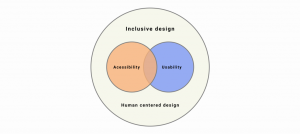How Does Contextual Design Address Cultural
Contextual Design is a user-centered approach to product development that begins with observation of users in their natural environment. Its primary aim is to uncover hidden data in a user’s daily behavior that may help the team to develop a product to meet a specific user need. It is a form of ethnographic research and has its roots in Garfinkel’s work from the late 1960s.
The process begins with a user-centric observation phase that includes the gathering of data from users and interviews. This enables the team to see how the current technology is being used and what its problems are. It also helps the team to understand what the users’ daily work practice looks like, allowing them to identify areas where technology can be used to improve the work.

This user-centric data can be consolidated and used to drive conversations about how the team can use technology to transform work practices. The resulting insights can then lead to the team developing a prototype and testing it with users. The primary goal of the prototype is to test how well it meets the users’ needs. The feedback gathered from the prototyping phase is then used to refine the solution and prepare it for implementation by the team.
How Does Contextual Design Address Cultural and Contextual Differences?
As with other user-centered approaches, the Contextual Design process can be resource-heavy, particularly in the upfront phases. To be effective, the team must have the time and personnel available to devote to observing and interviewing users, either in-house or through an agency or consulting business. It is also important for the team to have a good understanding of the type of people they will be working with — who will be their Gas and Oil, who will be able to take things further and who might bog down a conversation or even halt it entirely.
In addition, the method requires more time to complete than other user-centered approaches. It is less iterative than Agile or FDD and is geared towards a deeper understanding of the user and their needs before any features are developed.
While the core elements of contextual design remain unchanged, there are a number of new trends and developments that will likely shape the future of the process. These include the increased importance of leveraging behavioral science, and the growing need to ensure that products are designed to be compatible with a diverse range of cultural and socioeconomic backgrounds.
The process is also evolving to incorporate more aspects of human-centered design, such as the use of mental models, heuristics, and biases in order to develop more user-friendly solutions.
In the end, it’s about creating a user experience that feels completely native to the user and their work practice. This means that every interface element, from buttons to navigation menus, should be designed contextually so that the user can intuitively understand and interact with it. Incorporating contextual design principles into every step of a pro- cess ensures that the final product is both usable and user-friendly.